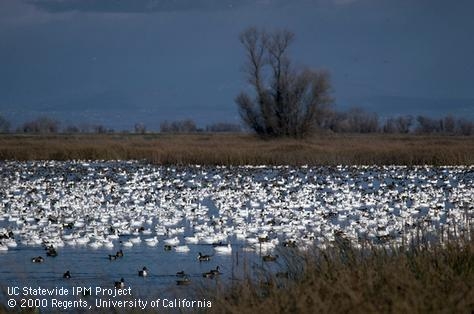- Author: Luis Espino
Released May 2, 2011, by the National Agricultural Statistics Service, Agricultural Statistics Board, United States Department of Agriculture
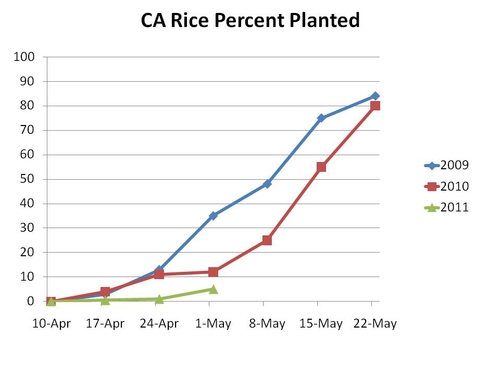
- Author: Luis Espino
Released April 25, 2011, by the National Agricultural Statistics Service (NASS), Agricultural Statistics Board, United States Department of Agriculture (USDA).
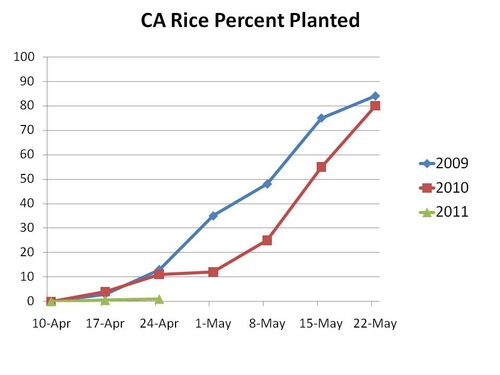
[There was an error on the Crop Progress post of 19 April. Percentage rice planted in California was reported as 3%, but the real number was 0% (although there were a few fields already planted on the west side). I apologize for the confusion.]

- Author: Luis Espino
I was looking for weevils today, so I visited a field with a history of weevil problems. The field was seeded 3 days ago, and there were no plants (rice or weeds) in the field yet. Levees were clean, the borders were weedy.
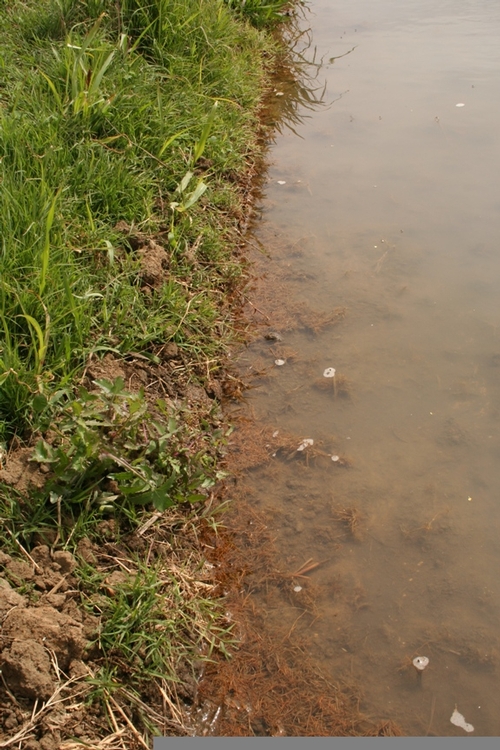
First, I looked at the grassy weeds around the edges of the field, and found some fresh feeding scars. Evidence that weevils were around.
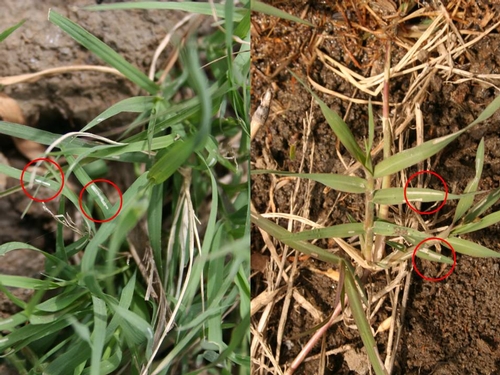
Then I looked at some of the weeds that ended up under water after the flood.
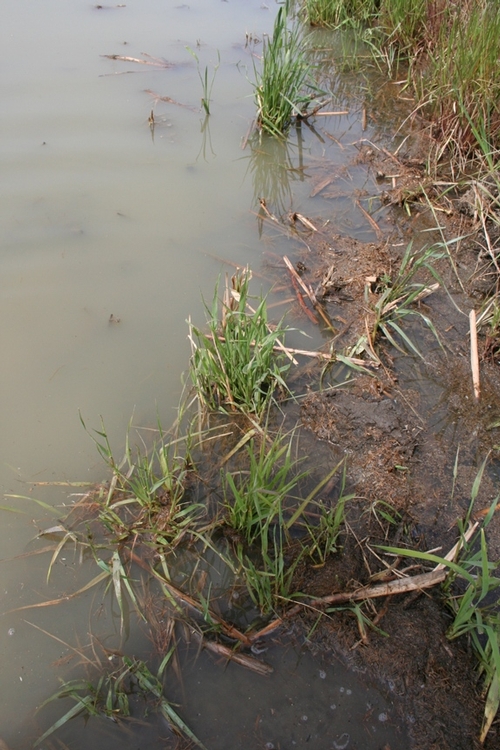
After a few minutes searching, I found some weevils.
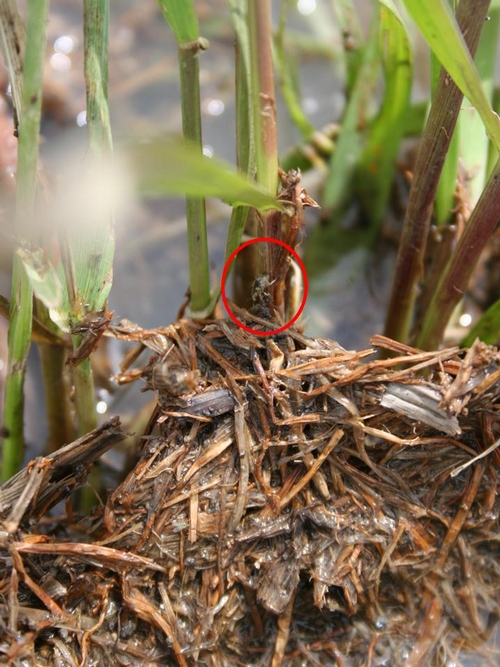
Rice water weevils come out of their overwintering sites in March-April and start feeding on grassy weeds. This allows them to regenerate their wing muscles and fly to flooded rice fields. Water seems to be the main attractant. Once there, they can feed on grassy weeds until rice seedlings start developing.
Looking for feeding scars and weevil adults will help you decide if you need a treatment. Remember that weevil infestations tend to be higher near weedy borders and levees.
While you are out there, also look for midge larvae and tadpole shrimp. Inspect the seed for midge injury and silken tubes. Tadpole shrimp eggs hatch after 3 days of flooding, but young tadpole shrimps are very small and hard to see. You will start seeing tadpole shrimp adults 8-12 days after flooding.
For more information and management options, consult the UC IPM Management Guidelines: Rice.
- Author: Luis Espino
Released April 18, 2011, by the National Agricultural Statistics Service, Agricultural Statistics Board, United States Department of Agriculture
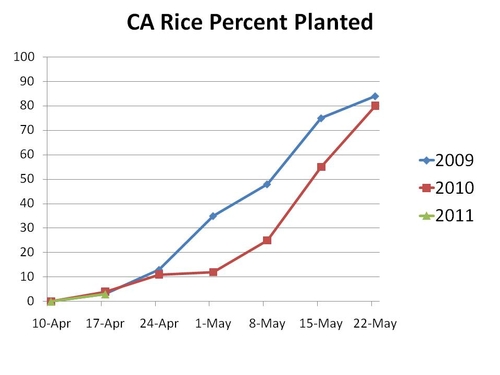
- Author: Luis Espino
Welcome to the University of California Rice Blog. Posts in this blog will be made by Univerisy of California Farm Advisors Luis Espino, Chris Greer and Cass Mutters. We'll be updating the blog constantly during the growing season. Come back when it stops raining!
